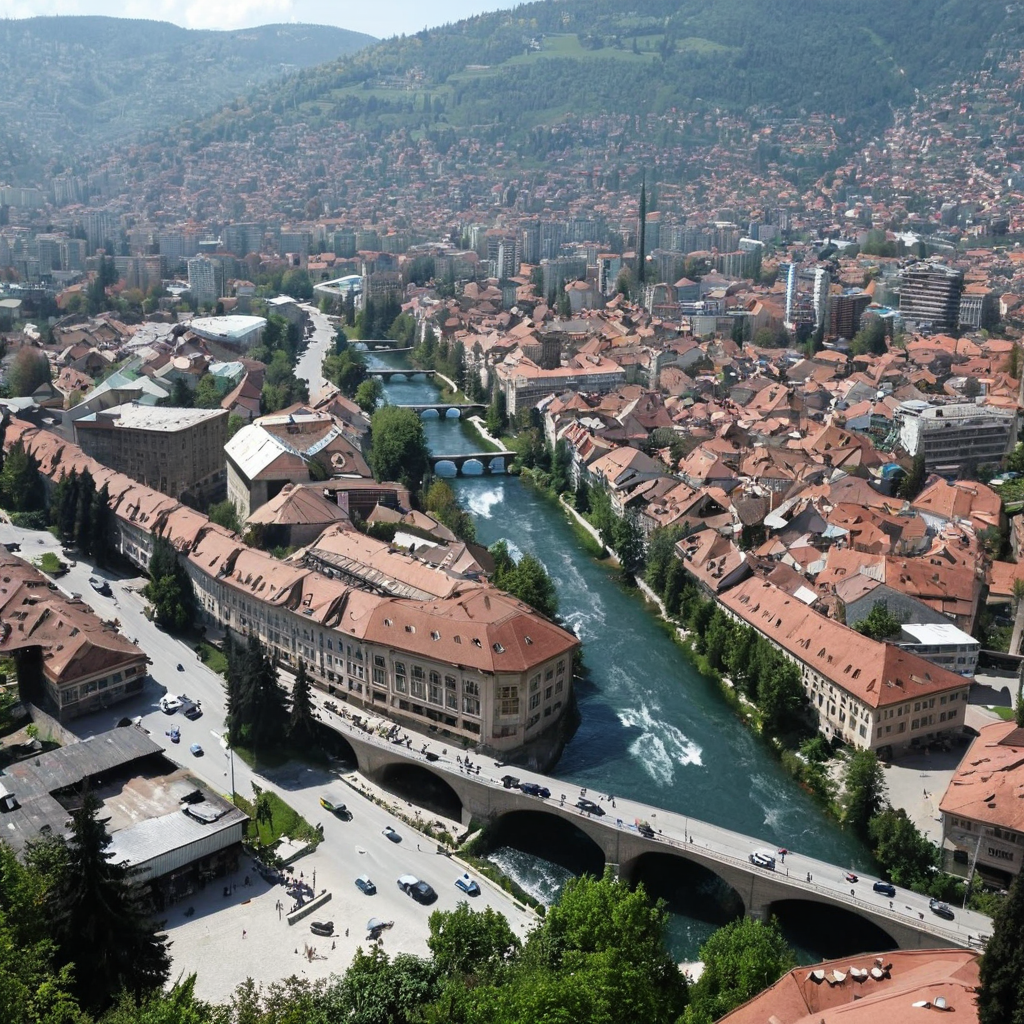The Balkans, a culturally rich and historically significant region in Southeast Europe, is a hidden gem for travelers seeking a unique blend of tradition, scenic beauty, and warm hospitality. From ancient ruins and medieval fortresses to vibrant cities and charming villages, the Balkans offers a kaleidoscope of experiences. In this guide, we’ll explore the history, culture, cuisine, and top destinations across the Balkans. Whether you’re an adventurer, a history lover, or a foodie, the Balkans has something for everyone.
1. A Brief History of the Balkans
The Balkans has a complex and fascinating history, shaped by various empires, from the Byzantine and Ottoman Empires to the Austro-Hungarian Empire. The region was a melting pot of cultures, religions, and ethnic groups, with influences from Orthodox Christianity, Islam, and Catholicism. This unique mix created a vibrant and resilient cultural identity, though political tensions and conflicts, including the Yugoslav Wars of the 1990s, have left a mark on the region.
Today, the Balkan countries are independent, but many still share cultural and historical ties. These countries are now rebuilding and preserving their heritage, making them attractive destinations for visitors from all over the world.
2. Rich Culture and Traditions of the Balkans
The Balkans is known for its strong cultural traditions, many of which are rooted in family, community, and music. Folklore plays a significant role in Balkan culture, with each country having its own traditional costumes, music, and dance. Traditional Balkan music is characterized by complex rhythms and unique instruments like the kaval (a wooden flute), the tambura (a stringed instrument), and the accordion.
Religious festivals, folk celebrations, and local fairs are celebrated across the region. The Orthodox Christian and Muslim holidays are especially significant, celebrated with traditional dances, feasts, and rituals. Hospitality is also central to Balkan culture; visitors are often warmly welcomed with open arms and are treated as family.
3. The Flavors of Balkan Cuisine
Balkan cuisine reflects the region’s diverse cultural influences, combining Mediterranean flavors with Middle Eastern and Central European elements. Here are some popular Balkan dishes to try:
- Ćevapi (Serbia, Bosnia): Small grilled sausages served with flatbread and onions.
- Burek (Across the Balkans): A savory pastry filled with meat, cheese, or spinach, typically enjoyed with yogurt.
- Sarma (Turkey, Balkans): Grape leaves stuffed with rice and minced meat.
- Musaka (Bulgaria, Serbia): A layered dish similar to moussaka, made with potatoes, meat, and egg custard.
- Shopska Salad (Bulgaria): A refreshing salad with tomatoes, cucumbers, onions, and grated feta cheese.
- Baklava (Across the Balkans): A sweet pastry made of layers of filo, nuts, and honey.
Drinks are also essential in Balkan culture, with strong coffee, herbal teas, and rakija (fruit brandy) being widely consumed. Each country has its own twist on these drinks, and rakija, in particular, is often homemade and served as a gesture of hospitality.
4. Top Cities and Monuments to Visit in the Balkans
1. Sarajevo, Bosnia and Herzegovina
- Why visit? Known as the “Jerusalem of Europe” due to its blend of mosques, churches, and synagogues.
- Top sights: Baščaršija (the old bazaar), the Latin Bridge, and Gazi Husrev-beg Mosque. Visit the Sarajevo Tunnel Museum for a glimpse into the city’s wartime history.
2. Dubrovnik, Croatia
- Why visit? A stunning medieval city on the Adriatic Sea, known for its well-preserved city walls.
- Top sights: Dubrovnik’s Old Town, the iconic city walls, and Fort Lovrijenac. Dubrovnik also offers beautiful beaches and an enchanting sea view.
3. Belgrade, Serbia
- Why visit? Serbia’s capital is a lively hub of culture and nightlife.
- Top sights: Belgrade Fortress, Kalemegdan Park, and the Church of Saint Sava. Enjoy the vibrant nightlife along the river at the floating bars (splavovi).
4. Sofia, Bulgaria
- Why visit? Bulgaria’s capital blends Roman, Ottoman, and Soviet influences.
- Top sights: Alexander Nevsky Cathedral, Vitosha Boulevard, and the ancient Serdica ruins. Sofia also has many charming parks and green spaces.
5. Tirana, Albania
- Why visit? A colorful, dynamic city that has emerged from years of isolation with a unique character.
- Top sights: Skanderbeg Square, the National History Museum, and Blloku, a trendy neighborhood once restricted to Albania’s Communist elite.
6. Mostar, Bosnia and Herzegovina
- Why visit? Known for its iconic Stari Most bridge and its blend of Ottoman and Austro-Hungarian architecture.
- Top sights: Stari Most, Koski Mehmed Pasha Mosque, and the Old Bazaar. The bridge is especially beautiful at sunset.
7. Thessaloniki, Greece
- Why visit? Greece’s second city is rich in Byzantine history and has a lively cultural scene.
- Top sights: The White Tower, Rotunda, and the Archaeological Museum. Thessaloniki is also known for its vibrant café culture and seaside promenade.
8. Ohrid, North Macedonia
- Why visit? A UNESCO World Heritage site with beautiful lakeside scenery and ancient churches.
- Top sights: Lake Ohrid, Saint Naum Monastery, and the Church of Saint John at Kaneo. This serene lake town is perfect for a peaceful retreat.
9. Plovdiv, Bulgaria
- Why visit? One of the oldest continuously inhabited cities in Europe, with a rich history and a charming Old Town.
- Top sights: The Roman amphitheater, Plovdiv Old Town, and Kapana Creative District. Plovdiv offers a lively art and cultural scene.
10. Kotor, Montenegro
- Why visit? Nestled in a scenic bay surrounded by mountains, Kotor is a UNESCO World Heritage site.
- Top sights: Kotor Old Town, Kotor Fortress, and the Bay of Kotor. The views from the fortress are breathtaking.
5. Planning Your Balkan Trip: Tips and Budget
- Travel Season: Summer is ideal for beach destinations like Croatia, while spring and fall are great for city exploration and hiking.
- Transportation: Public transport is affordable, but renting a car allows for more flexibility, especially for exploring scenic routes.
- Budgeting: The Balkans is generally budget-friendly compared to Western Europe. Expect to spend $50–$100 daily, including accommodations, food, and local travel.
- Accommodations: Choose from a range of accommodations, from budget hostels and charming guesthouses to luxury hotels, especially in popular cities like Dubrovnik and Kotor.
6. Why Everyone Loves the Balkans
The Balkans captivates visitors with its authenticity, scenic landscapes, and welcoming locals. Each country offers unique experiences, from the pristine beaches of Montenegro to the cultural heritage of Greece and the vibrant nightlife of Serbia. The region’s complex history, fascinating traditions, and mouthwatering cuisine make it a truly unforgettable destination. Travelers often fall in love with the Balkans’ blend of old-world charm and modern energy, finding a special connection with this vibrant corner of Europe.
Conclusion
Whether you’re exploring ancient ruins, tasting local specialties, or relaxing by a beautiful lake, the Balkans offers diverse and enriching travel experiences. With its rich history, warm hospitality, and incredible sights, it’s no wonder this region is becoming a must-visit destination. Discover the Balkans, and you’ll find more than just picturesque landscapes—you’ll encounter a world of stories, flavors, and unforgettable memories.




